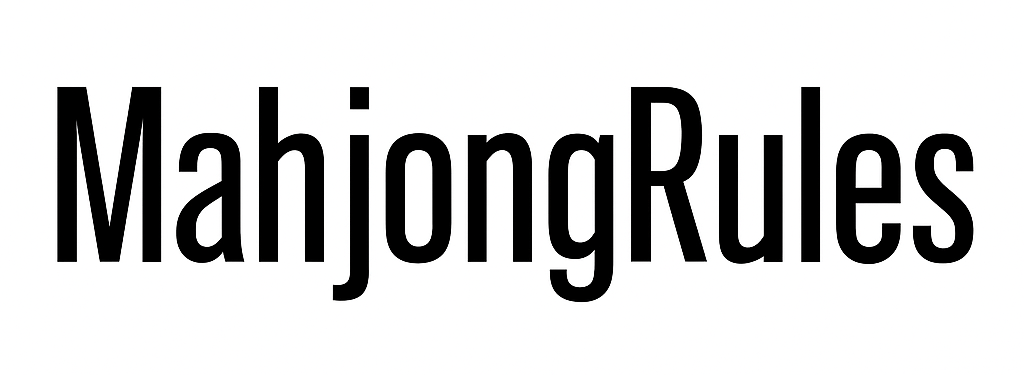If you think American Mahjong is just about calling tiles and matching patterns, you’re missing half the fun. Enter the Charleston – a unique, multi-pass tile exchange that happens before the game starts. It’s where pawns become queens, rags turn into riches, and first impressions can shift dramatically.
Hi, I’m Connor. My first time through the Charleston felt like rearranging a Rubik’s cube blindfolded. By the end, my rack went from “winning? maybe…” to “holy moly, I’ve got a shot.” It’s a ritual that says more about your style than the cards do. Stick around – I’ll walk you through every exchange, explain the strategy, and share examples that make it all click.
What Is the Charleston?
In American Mahjong, the Charleston is a sequence of up to four tile-passing rounds before play officially begins. Its purpose? To help you draw closer to valid NMJL card hands and refine your tile rack from chaos into coherence.
There are two types of Charleston:
- Mandatory Passes: The first and second Charleston (always played, direction depends on table type).
- Optional: The third “optional” Charleston and the courtesy charleston – only used in some rules.
Why the Charleston Matters
- Hand Productivity: It’s your first shot at forming closer-to-winning combinations.
- Psychological Play: Veteran players use it to signal hand direction.
- Trash Management: It’s a chance to offload difficult or useless tiles early.
Connor’s Take:
“Charleston was my secret weapon once I got it. I learned to send away Dragons and Five Dots early and watch my rack turn magical by the end.”
The Charleston Sequence – Step by Step
Pass 1: Left & Right
- You pass 3 tiles to the player on your left, and receive 3 from your right (or vice versa, depending on table type).
- This pass is vital for two reasons: you’re feeding opponents and scouting their styles.
Pass 2: Across the Table
- You now pass 3 tiles directly across. This is your shortcut to trading tiles you know the other player will likely keep.
Optional Charleston (Pass 3)
- If your table plays this variant, you pass again to the same player you passed to in the first Charleston.
Courtesy Charleston (Pass 4)
- The final pass works in reverse order of pass 3, and is purely optional – used when the group wants more control before play starts.
Connor’s Take:
“In a 4-pass Charleston, you feel like a surgeon. You’ve seen the rack as it evolves. The final pass? That’s when winners are made.”
Examples in Action
Here’s how a rack might develop:
Start Rack:
🀇🀈🀉 🀙🀚 🀜🀝🀞 🀝🀞 💠🀪🀫🀤
(A mess of 1-4 Bamboos, Winds, Flowers – no pattern yet)
After Pass 1 (Left & Right):
🀇🀈🀉 🀙🀚 🀜🀝🀞 🀠🀠🀠 🀤
(Three matching Greens -> now a Pung formation)
After Pass 2 (Across):
🀇🀈🀉 🀙🀚 🀜🀜🀜 🀠🀠🀠 🀤
(Perfect Pung of Characters ready, plus groundwork on Bamboos)
This simplified example shows how just two Charlestons can elevate a random rack into a hand with structure. Want more? Let me add visuals later.
Strategy Tips
- Know the Card Patterns: Pass tiles that don’t fit any current layouts.
- Feed Trash Early: Toss out Flowers or Honors you don’t need.
- Watch Your Vulnerability: Passing Dragons can signal danger.
- Use Optional Passes Wisely: Each pass roots out inefficiencies – it’s skill, not luck.
Connor’s Advice:
“I started previewing the Charleston to myself: ‘Need Nine Dots. Grass is useless. Keep the Reds.’ That mental checklist kept me sharp.”
Common Charleston Mistakes
- Passing Jokers Too Early – You might need them later for kongs.
- Ignoring Pattern Compatibility – Every truly useful exchange fits into a likely NMJL pattern.
- Skipping Courtesy Charlestons – Only useful if your group values precision.
Connor’s Tip:
“I once passed a Joker and watched my rack collapse. I’d traded consistency for panic.”
FAQ (Search-Driven)
Do I have to do all four Charleston passes?
No – most clubs only require the first two. The optional or courtesy ones depend on your playgroup’s rules.
Can I change the order of Charleston in my home game?
Technically yes, but only if all players agree. Official NMJL rules specify order.
What happens if I mis-pass tiles?
You must stop the game and resume after correction. Most playgroups reset Charlestons in that round.
Should I play a Charleston if I’m a beginner?
Yes – with a cheat sheet. It trains you in hand planning and risk management before the game even starts.
Final Thoughts
The Charleston isn’t just a quirky tradition – it’s a skilled dance of deduction, timing, and awareness. It sets the tone for how your game will unfold.
Want to dominate your next match? Master the Charleston. Practice visualizing your rack at each stage, and you’ll be dropping into winning patterns with ease.
Connor’s Last Word:
“I once walked away from a Charleston already dreaming of Mahjong. And guess what? I got there. Every pass counts.”
